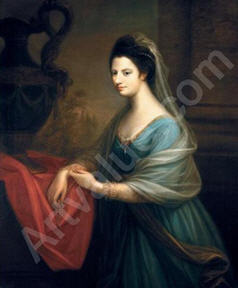
PREV ARTICLE
NEXT ARTICLE
FULL ISSUE
PREV FULL ISSUE
SARAH SOPHIA BANKSAn article elsewhere in this issue announces a new book on the numismatic library of Sarah Sophia Banks. Here's an excerpt of a 2023 article about her by Catherine Eagleton, former Curator of Modern Money at the British Museum. -Editor
The numismatic collection included around 9,000 objects, as well as a large library. Sarah Sophia was particularly interested in collecting contemporary objects – a contrast to other collectors at the time, many of whom focussed on ancient coins. Joseph Banks, of course, was also interested in contemporary coinage, through his work on the Privy Council Committee on Coin, but his sister's numismatic collection dwarfed his – he had only 100 coins and medals in it at his death. In 1791, Sarah Sophia began to systematically list who gave her objects for her numismatic collection, as well as the people to whom she gave coins, tokens, or medals. These remarkable lists of the provenance of more than 8,500 objects were compiled up to her death, and provide a remarkable resource. It is possible to identify more than 500 individuals, ranging from Princess Elizabeth, to Mr Vacary the Porter, and of course including Joseph Banks, who gave her about 1,600 objects. As well as acquiring objects as donations from friends and correspondents, Sarah Sophia also bought objects for her collections, and gave coins, medals and tokens to other people, keeping lists of these as well as the lists of donations to her. As well as collecting the objects themselves, Sarah Sophia collected and recorded information about them, keeping scraps cut out from newspapers, as well as memoranda of things told to her by her contacts and her brother's correspondents. She, like her brother, was interested in archaeology, and occasionally recorded where objects were found or dug up. Some of the information preserved in these newspaper clippings and notes is available from no other source – details of who made particular tokens or medals, and when, for what purpose the objects were used, or when they were collected. The numismatic collections were stored in wooden cabinets, in her bedroom on the first floor of the house at 32 Soho Square. As an aid to finding objects, Sarah Sophia compiled a catalogue of her collection in about 1815, in 7 volumes. This shows us that the objects in her collection were organised geographically, beginning with coins from England, before moving on to Europe, Africa, the Middle East, Asia, and the Americas. Within each country, the coins were organised according to the rulers and the metals from which they were made. So, in a similar way to that in which Joseph's collections organised and classified the natural world, so Sarah Sophia's numismatic collection organised and classified the political world, through its rulers and the currencies they issued. Today, Sarah Sophia's numismatic collections are an exceptionally rich resource for understanding the history of collecting of coins, tokens, and medals. The information she collected about them tells us about the contexts in which these objects were made, used, collected, and understood – in some cases, information that is available from no other source. Moreover, the collections also give us a way to learn about Sarah Sophia Banks herself, who would otherwise be so difficult to disentangle from her much more famous brother.
To read the complete article, see:
To read earlier E-Sylum articles, see:
Wayne Homren, Editor The Numismatic Bibliomania Society is a non-profit organization promoting numismatic literature. See our web site at coinbooks.org. To submit items for publication in The E-Sylum, write to the Editor at this address: whomren@gmail.com To subscribe go to: https://my.binhost.com/lists/listinfo/esylum All Rights Reserved. NBS Home Page Contact the NBS webmaster 
|

